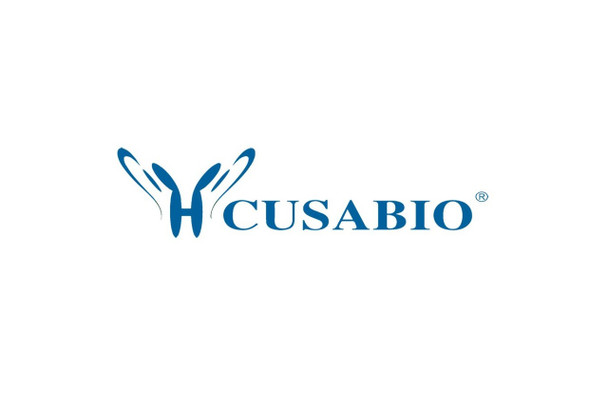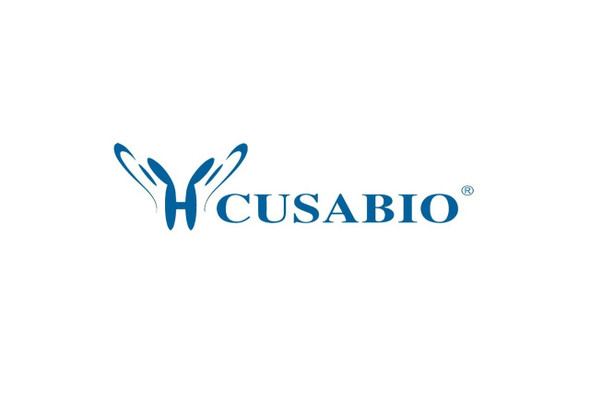Cusabio Human Recombinants
Recombinant Human Heterogeneous nuclear ribonucleoprotein D0 (HNRNPD), partial | CSB-RP025444h
- SKU:
- CSB-RP025444h
- Availability:
- 13 - 23 Working Days
Description
Recombinant Human Heterogeneous nuclear ribonucleoprotein D0 (HNRNPD), partial | CSB-RP025444h | Cusabio
Alternative Name(s): AU-rich element RNA-binding protein 1
Gene Names: HNRNPD
Research Areas: Transcription
Organism: Homo sapiens (Human)
AA Sequence: AVGGSAGEQEGAMVAATQGAAAAAGSGAGTGGGTASGGTEGGSAESEGAKIDASKNEEDEGHSNSSPRHSEAATAQREEWKMFIGGLSWDTTKKDLKDYFSKFGEVVDCTLKLDPITGRSRGFGFVLFKESESVDKVMDQKEHKLNGKVIDPKRAKAMKTKEPVKKIFVGGLSPDTPEEKIREYFGGFGEVESIELPMDNKTNKRRGFCFITFKEEEPVKKIMEKKYHNVGLSKCEIKVAMSKEQYQQQQQWGSRGGFAGRARGRGGDQQSGYGKVSRRGGHQNSYKPY
Source: E.coli
Tag Info: N-terminal GST-tagged
Expression Region: 18-306aa
Sequence Info: Partial of Isoform 3
MW: 58.3 kDa
Purity: Greater than 90% as determined by SDS-PAGE.
Relevance: Binds with high affinity to RNA molecules that contain AU-rich elents (AREs) found within the 3'-UTR of many proto-oncogenes and cytokine mRNAs. Also binds to double- and single-stranded DNA sequences in a specific manner and functions a transcription factor. Each of the RNA-binding domains specifically can bind solely to a single-stranded non-monotonous 5'-UUAG-3' sequence and also weaker to the single-stranded 5'-TTAGGG-3' telomeric DNA repeat. Binds RNA oligonucleotides with 5'-UUAGGG-3' repeats more tightly than the telomeric single-stranded DNA 5'-TTAGGG-3' repeats. Binding of RRM1 to DNA inhibits the formation of DNA quadruplex structure which may play a role in telomere elongation. May be involved in translationally coupled mRNA turnover. Implicated with other RNA-binding proteins in the Cytoplasmic domain deadenylation/translational and decay interplay of the FOS mRNA mediated by the major coding-region determinant of instability (mCRD) domain. May play a role in the regulation of the rhythmic expression of circadian clock core genes. Directly binds to the 3'UTR of CRY1 mRNA and induces CRY1 rhythmic translation. May also be involved in the regulation of PER2 translation.
Reference: The human HNRPD locus maps to 4q21 and encodes a highly conserved protein.Dempsey L.A., Li M.-J., DePace A., Bray-Ward P., Maizels N.Genomics 49:378-384(1998)
Storage: The shelf life is related to many factors, storage state, buffer ingredients, storage temperature and the stability of the protein itself. Generally, the shelf life of liquid form is 6 months at -20?/-80?. The shelf life of lyophilized form is 12 months at -20?/-80?.
Notes: Repeated freezing and thawing is not recommended. Store working aliquots at 4? for up to one week.
Function: Binds with high affinity to RNA molecules that contain AU-rich elements (AREs) found within the 3'-UTR of many proto-oncogenes and cytokine mRNAs. Also binds to double- and single-stranded DNA sequences in a specific manner and functions a transcription factor. Each of the RNA-binding domains specifically can bind solely to a single-stranded non-monotonous 5'-UUAG-3' sequence and also weaker to the single-stranded 5'-TTAGGG-3' telomeric DNA repeat. Binds RNA oligonucleotides with 5'-UUAGGG-3' repeats more tightly than the telomeric single-stranded DNA 5'-TTAGGG-3' repeats. Binding of RRM1 to DNA inhibits the formation of DNA quadruplex structure which may play a role in telomere elongation. May be involved in translationally coupled mRNA turnover. Implicated with other RNA-binding proteins in the cytoplasmic deadenylation/translational and decay interplay of the FOS mRNA mediated by the major coding-region determinant of instability (mCRD) domain. May play a role in the regulation of the rhythmic expression of circadian clock core genes. Directly binds to the 3'UTR of CRY1 mRNA and induces CRY1 rhythmic translation. May also be involved in the regulation of PER2 translation.
Involvement in disease:
Subcellular Location: Nucleus, Cytoplasm
Protein Families:
Tissue Specificity:
Paythway:
Form: Liquid or Lyophilized powder
Buffer: If the delivery form is liquid, the default storage buffer is Tris/PBS-based buffer, 5%-50% glycerol. If the delivery form is lyophilized powder, the buffer before lyophilization is Tris/PBS-based buffer, 6% Trehalose, pH 8.0.
Reconstitution: We recommend that this vial be briefly centrifuged prior to opening to bring the contents to the bottom. Please reconstitute protein in deionized sterile water to a concentration of 0.1-1.0 mg/mL.We recommend to add 5-50% of glycerol (final concentration) and aliquot for long-term storage at -20?/-80?. Our default final concentration of glycerol is 50%. Customers could use it as reference.
Uniprot ID: Q14103
HGNC Database Link: HGNC
UniGene Database Link: UniGene
KEGG Database Link: KEGG
STRING Database Link: STRING
OMIM Database Link: OMIM










